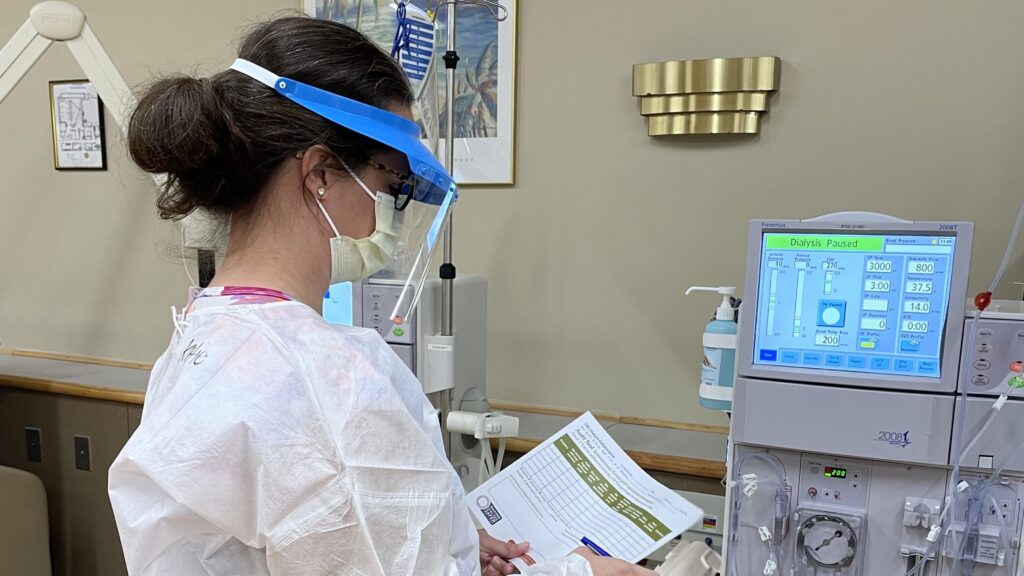Over the weekend, the Trump administration appeared to reverse plans for devastating cuts to the Centers for Disease Control and Prevention’s Epidemic Intelligence Service (EIS). It was the right decision. As a former EIS officer, I believe the mere proposition of dismantling such a pivotal program underscores a troubling reality: Our nation’s already tenuous public health infrastructure and response capacity are alarmingly susceptible to political whims and are at risk of being indiscriminately cut.
For more than seven decades, the EIS program has been a cornerstone of the CDC’s ability to investigate and control disease outbreaks. Founded in 1951 in response to concerns about biological warfare, EIS has since trained thousands of epidemiologists who have played critical roles in addressing some of the most significant public health threats of our time. From the eradication of smallpox to the response to Ebola, Covid-19, and countless other outbreaks, EIS officers have been on the front lines, often putting their own safety at risk to protect the public.
advertisement
The fate of future classes of EIS officers, such as those slated to start their two-year stints this coming June, remains unclear as of this writing. The incoming EIS class (typically about 60-75 people) has been in the making for nearly a year. It is the product of a highly competitive process to identify some of the most qualified, talented and promising future leaders in applied epidemiology and public health practice for experiential training and capacity-building. Importantly, the impact of the EIS program extends far beyond CDC headquarters in Atlanta. Graduates of the program have been CDC directors and hold other leadership positions at the CDC, FDA, NIH, state and local health departments, health organizations around the world such as WHO, and the pharmaceutical industry. Their expertise in field epidemiology, outbreak response, and public health surveillance has shaped policies, saved lives, and strengthened public health systems worldwide.
For me, the EIS experience was transformative. It was more than just training — it was a call to serve, a rigorous immersion in public health crises, and a lifelong professional network.
During my stint with EIS in 1999, I was deeply involved in an outbreak investigation of encephalitis in New York City that was determined to be the first emergence of West Nile virus in the Western Hemisphere. What we learned from that investigation changed the level of vigilance around preventing mosquito breeding sites and conducting surveillance for mosquito-borne viral illness across the country. While it only caused 59 cases of meningoencephalitis and seven deaths in 1999, our investigation helped prepare the nation for and limit the impact of what could have been much worse in subsequent years when West Nile virus spread like a wave across the U.S., causing thousands of encephalitis cases and deaths. What I learned from that investigation — largely from former EIS officers who became committed, seasoned professionals based at the NYC Health Department — were invaluable lessons on how to do surveillance for infectious disease threats and respond to outbreaks that threaten the public’s health.
advertisement
Later, my deployment to Nigeria for the Guinea Worm Eradication Program and HIV surveillance efforts in sub-Saharan Africa reinforced my commitment to global infectious disease control. After EIS, I spent six years working on the President’s Emergency Plan for AIDS Relief (PEPFAR), collaborating with in-country partners in more than a dozen sub-Saharan African countries hardest hit by HIV/AIDS to help track and optimize the impact of scaling up treatment access. These experiences, rooted in my EIS training, continue to shape my research and mentorship of future epidemiologists, many of whom have pursued EIS careers themselves.
I am just one of about 3,000 EIS alumni who had similar formative experiences influencing career trajectories of committed professionals towards the understaffed fields of applied epidemiology and public health. Firing or effectively cutting off the pipeline of future EIS officers would have been the end of a vital institution that helps ensure our nation’s preparedness for infectious disease and other public health threats. It would represent an erosion of CDC’s future scientific workforce and leadership, and a retreat from the public health infrastructure that has helped protect the U.S. for generations.
This recent threat to the EIS program reflects a broader trend of politicizing public health decisions, uninformed cutting of public health and scientific jobs, and ultimately jeopardizing the very systems designed to protect us. While the EIS program has likely been spared this time, the fact that its existence was in jeopardy at all highlights the precariousness of our public health infrastructure. Indeed, the indiscriminate dismantling of our public health infrastructure would be a profound loss for everyone in the U.S., which now more than ever needs to maintain a rapid, coordinated, and science-driven response to emerging health threats. Any political erosion of this infrastructure that is in store for us may or may not be felt immediately, but it will definitely be felt in the years to come, when the absence of dedicated epidemiologists and other public health professionals will assuredly result in slower responses, missed or delayed outbreak detection, and a significantly weakened global standing in public health leadership.
advertisement
What is happening at CDC, NIH, FDA and other U.S. agencies with public health missions should not go unnoticed. Public health professionals, policymakers, and the public at large should recognize what is at stake. It represents not only a setback for public health today but a failure to protect future generations from the threats we cannot yet see. To ensure the continued safety and well-being of our nation, we must remain vocal and proactive in defending the integrity of our public health agencies and systems.
Denis Nash, Ph.D., M.P.H., is a distinguished professor of epidemiology at the City University of New York’s Graduate School of Public Health. He is also the executive director of the CUNY Institute for Implementation Science in Population Health and a former epidemic intelligence service officer with the Centers for Disease Control and Prevention.

